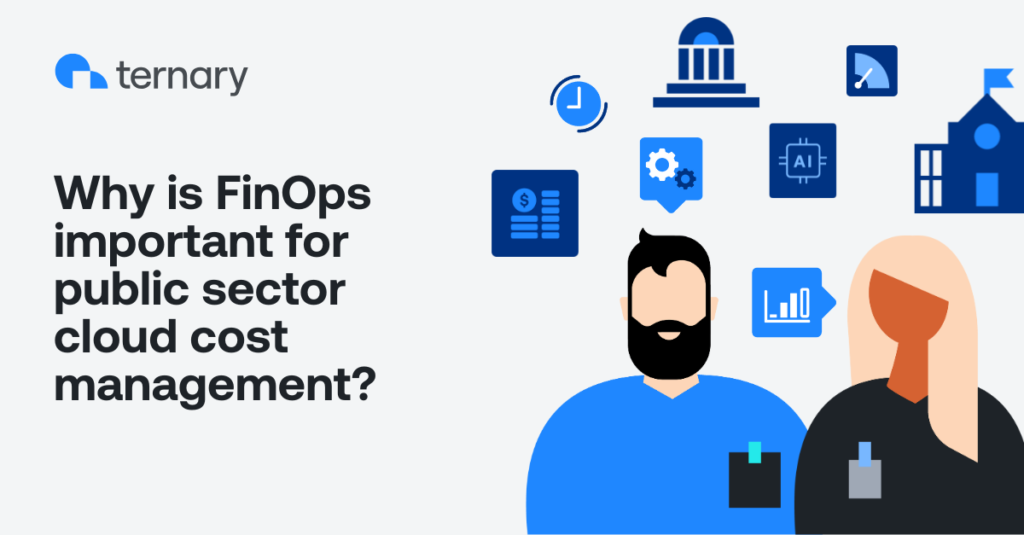FinOps has emerged as an important discipline for state, local, and education (SLED) organizations. In such organizations, fiscal responsibility and regulatory compliance are top priorities. FinOps goes beyond simple cost-cutting. Instead, FinOps provides a strategic framework for SLED organizations to maximize the value of their cloud investments. At its heart, FinOps is about establishing a culture of financial accountability and operational efficiency. For IT leaders or professionals who oversee cloud infrastructure, a thorough understanding of FinOps principles is indispensable.
Central to FinOps is the ability to understand and implement key concepts like cloud cost optimization, precise forecasting, and effective resource tagging. These concepts help technical teams gain granular visibility into their cloud spend. This visibility, in turn, fosters informed decision-making and strategic resource allocation. In a sector where every dollar counts, that level of control isn’t just beneficial—it’s essential.
This blog will dive into the core components of FinOps. We’ll explore its profound impact on multi-cloud management and illustrate how it can provide the necessary tools for success. By examining the practical applications of FinOps, we aim to equip IT professionals with the insights and strategies needed to navigate the complexities of cloud cost management. These professionals can ensure that public resources are used responsibly and SLED organizations achieve their operational objectives, while maintaining fiscal integrity.
Understanding FinOps: Key FinOps Principles, core Capabilities, and practical applications
Key FinOps Principles
Applying FinOps Principles makes cloud financial accountability and operational efficiency a reality. So let’s highlight a few examples:
Everyone takes ownership for their technology usage. Assigning ownership of cloud spend ensures that teams and/or individuals take responsibility for actively managing costs.
FinOps data should be accessible, timely, and accurate. Taking responsibility depends on continuous, agentless monitoring. Such monitoring provides always-on cost and usage tracking, immediately flagging anomalies. In fact, ML-powered human-tunable anomaly detection is vital for preventing unexpected cost overruns. Besides, it helps leadership make informed decisions that influence forecasts and budgets.
Teams need to collaborate. The FinOps Principle that makes it all possible is streamlining communication between IT, Finance, and Engineering. Cross-team collaboration ensures that cloud strategy isn’t siloed. Instead, it’s aligned with overall organizational goals, making the forecasting and budgeting process more accurate and effective.
Core FinOps Capabilities
Truly harnessing the power of cloud resources depends on establishing a structured FinOps practice. Each Capability serves as a building block that supports the next. Collectively, they provide a comprehensive view of cloud spend. Here are a few core FinOps capabilities:
Cost allocation: At the foundation lies cloud cost allocation, or the process of distributing cloud costs across departments or projects. Cost allocation helps create transparency and accountability by providing a clear, actionable view of where every dollar is spent. This process directly informs budgeting.
Budgeting: Effective budgeting, in turn, establishes financial plans that prevent cloud cost overruns and ensure fiscal prudence.
Forecasting: Forecasting allows organizations to predict future cloud costs, using historical data to adjust budgets and optimize resources.
Practical FinOps applications
As we’ve shown, FinOps Principles and Capabilities are core components in building your FinOps practice. Basic cost tracking tools provide essential monitoring and reporting, offering a foundational level of control. However, it’s the advanced optimization strategies that truly unlock savings.
To illustrate, let’s consider some practical FinOps applications:
- Resource tagging, for example, allows for detailed categorization of cloud resources. It directly informs cost allocation, by pinpointing areas with high spend or inefficiency.
- Custom labels and scoped views streamline financial reports. In the process, they free up valuable time and resources, allowing for more proactive performance tracking and budget adjustments.
- Cost reallocation rules and anomaly alerts help drive accountability for cloud consumption across teams. They also identify unexpected changes or irregularities in cloud spend. That way, they prevent cost overruns, directly impacting the bottom line.
SLED organizations that adopt multi-cloud FinOps platforms find these applications invaluable, allowing them to achieve significant savings through efficient cloud cost management. The interplay between FinOps Principles and Capabilities creates a cohesive system for informed, strategic cloud spending.
The impact of FinOps on IT departments
For public sector IT teams, implementing FinOps tools and practices translates into tangible benefits, directly increasing their control over cloud spend and their ability to manage cloud resources.
Key benefits may include:
- Improved cost control. Tracking cloud spend unlocks the ability to make informed, data-driven decisions that align with budgetary constraints and operational needs. FinOps tools provide financial oversight, ensuring that budgets are both met and optimized for maximum value.
- Enhanced forecasting accuracy. Forecasting, a core FinOps Capability, can meaningfully improve budget planning and resource provisioning. Instead of reacting to unexpected cloud costs, IT departments can proactively adjust budgets based on reliable predictions.
- Optimized resource utilization. Proactive budget adjustments allow for efficient resource optimization, eliminating wasteful cloud spending and improving financial outcomes.
For IT leaders, it’s worth noting the evolving scope of FinOps, as evidenced by recent trends. The FinOps Foundation’s State of FinOps 2025 report indicates that 65% of organizations are now incorporating SaaS spending into their FinOps practices. This underscores the growing importance of having a comprehensive FinOps strategy, addressing all facets of cloud-related investments.
Such a strategy includes tools and knowledge to manage a broader range of expenses, ensuring all cloud investments are aligned with organizational objectives and key results (OKRs). Incorporating SaaS spend in FinOps shows a commitment to holistic cloud management, where all expenses are scrutinized and optimized, supporting better strategic decision-making and profitability.
Key considerations and summarizing FinOps for SLED
When implementing FinOps, it’s helpful to acknowledge the unique challenges and requirements that distinguish SLED entities from their private counterparts. Key considerations for implementing FinOps include:
Regulatory compliance. The public sector operates under strict regulations, requiring a considerable focus on compliance.
Data security. Adherence to data privacy laws is non-negotiable. That is to say, FinOps solutions must prioritize data security and safeguard sensitive information stored in the cloud. Key FinOps practices (e.g., continuous monitoring and cross-team collaboration) enhance data security, ensuring that anomalies or unauthorized access are quickly detected and addressed. Providing a robust audit trail protects sensitive data and strengthens compliance efforts.
Financial transparency. Beyond security, financial transparency is imperative. Public funds demand accountability; clear, auditable reporting builds trust with stakeholders. Practical FinOps applications contribute directly to cloud cost transparency by tracking spend and predicting future costs, enabling SLED organizations to provide detailed reports that demonstrate responsible fiscal management.
The selection of FinOps tools should align with those considerations, favoring solutions tailored to the regulatory requirements of SLED organizations.
Ultimately, FinOps enables public sector organizations to achieve their operational objectives while adhering to strict budgetary and regulatory requirements. By integrating practical applications like cost allocation and forecasting with key principles like continuous monitoring and cross-team collaboration, FinOps provides a comprehensive framework for responsible cloud cost management. When implemented thoughtfully, it empowers public sector organizations to maximize the value of their cloud investments while maintaining the trust of those they serve.
Frequently asked questions
How can FinOps help SLED organizations manage cloud costs within strict budget constraints and funding cycles?
FinOps equips public sector IT teams with precise cost allocation and forecasting tools, essential for aligning cloud costs with allocated budgets. By distributing costs across departments, organizations gain clear visibility into spending patterns. Forecasting tools also help predict future cloud spend based on funding cycles, ensuring resources are used efficiently. This proactive approach helps prevent budget overruns, allowing for timely adjustments. Maintaining fiscal responsibility is crucial for public trust, and FinOps provides the framework to achieve this.
Can FinOps help consolidate and manage costs across a mix of different cloud service providers while ensuring compliance with government procurement standards?
Yes, FinOps platforms offer centralized management, providing a unified view of cloud spend across multi-cloud environments, simplifying cost tracking and optimization and ensuring compliance with government procurement standards. Capabilities like detailed reporting and audit trails support transparency, demonstrating responsible fiscal management. FinOps solutions can generate reports tailored to government audits. This streamlines the compliance process, helping SLED organizations manage cloud costs effectively while adhering to relevant regulations.
How can we ensure our FinOps practices adhere to SLED’s strict, unique regulatory requirements (e.g., data privacy, security mandates)?
You can prioritize FinOps solutions with stringent data access controls, encryption, and audit trails to safeguard sensitive data. Or explore vendors that offer self-hosted FinOps solutions, to maintain greater control over your sensitive data. Regular compliance checks and reporting are also important for adhering to regulations, as are clear policies for data management and access control. By incorporating these security measures, SLED organizations can ensure their FinOps practices optimize cloud spend and protect sensitive information.

